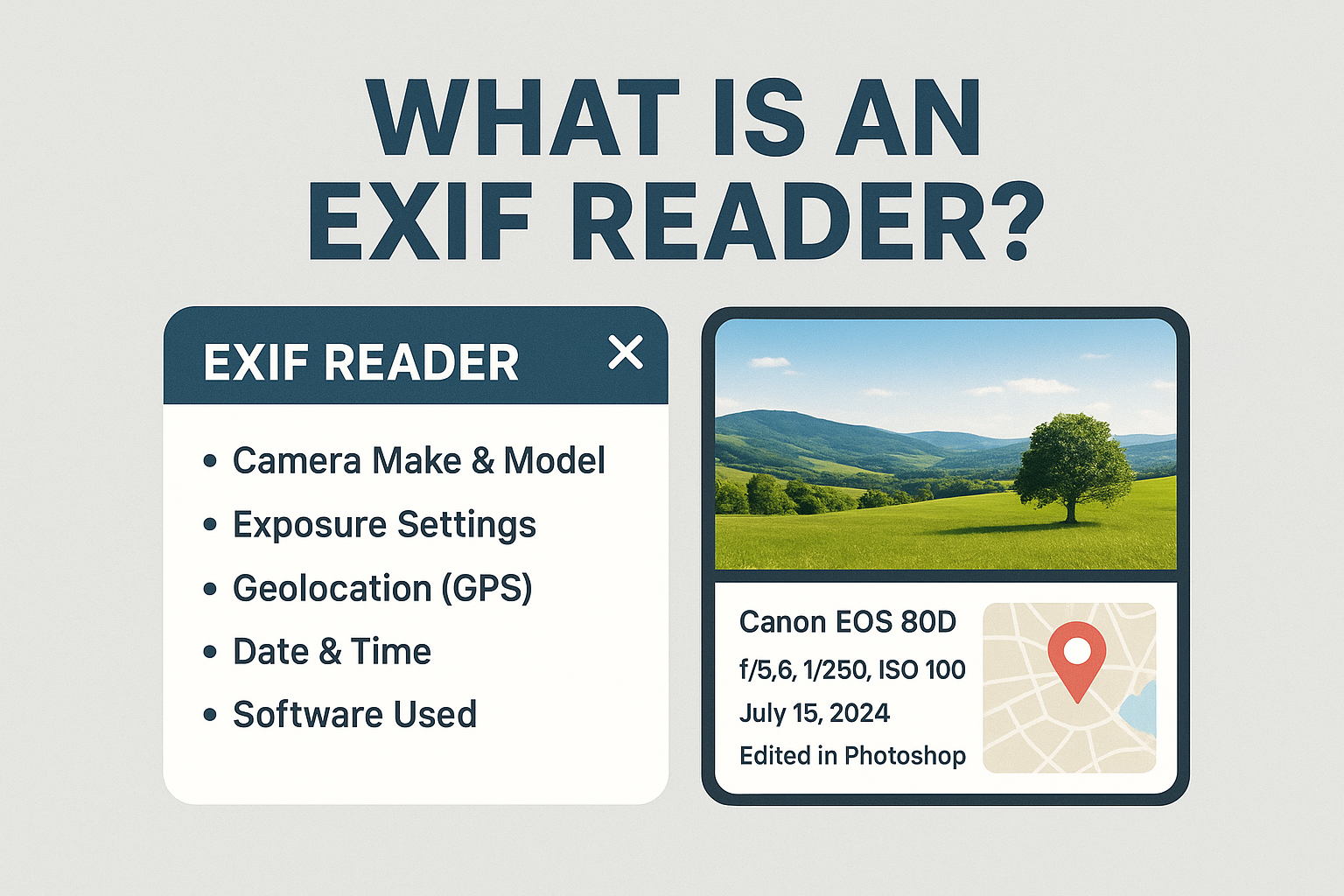
Exif reader
Created on 6 October, 2025 • Misc Tools • 17 views • 2 minutes read
Discover what an EXIF Reader is and how it helps you view hidden image metadata like camera settings, GPS location, and timestamps. Learn about the best EXIF reader tools, their uses, and how to protect your photo privacy online.
What Is an EXIF Reader?A Complete Guide to Image Metadata
Introduction to EXIF Data
When you capture a photo using your smartphone or digital camera, a hidden layer of information is stored along with the image — this is known as EXIF data (Exchangeable Image File Format). It contains valuable metadata such as camera model, exposure settings, GPS location, and date/time details. To access this information, you need a tool called an EXIF Reader.
An EXIF Reader allows photographers, digital artists, and investigators to extract and analyze this metadata easily. Whether for professional photography, digital forensics, or image verification, understanding EXIF data can be extremely useful.
What Is an EXIF Reader?
An EXIF Reader is a software tool or online service designed to read, display, and sometimes edit the metadata embedded within image files. It works with popular file formats like JPEG, TIFF, and RAW. By using an EXIF Reader, users can uncover hidden information about how and when a picture was taken.
For example:
Camera Make & Model: Identify which camera was used.
Exposure Settings: See details like ISO, shutter speed, and aperture.
Geolocation (GPS): View where the photo was taken on a map.
Date & Time: Check when the image was captured.
Software Used: Detect if the image has been edited or modified.
Why Use an EXIF Reader?
1. For Photographers
Photographers use EXIF Readers to analyze shooting parameters and improve their skills. By comparing settings from different photos, they can understand what worked best under certain conditions.
2. For Digital Investigators
In digital forensics, EXIF Readers help investigators verify photo authenticity and trace image origins. GPS coordinates and timestamps can provide critical evidence in investigations.
3. For Everyday Users
Even casual users can benefit. For example, if you’ve misplaced the location of a travel photo, an EXIF Reader can show the exact coordinates where it was taken.
Popular EXIF Reader Tools
Several tools are available for reading EXIF data. Here are some widely used options:
ExifTool – A powerful command-line utility for extracting and editing metadata.
Online EXIF Viewer – Web-based tools that display metadata instantly without software installation.
Photo Metadata Viewer Apps – Mobile apps for Android and iOS that provide on-the-go access to EXIF data.
Adobe Lightroom / Photoshop – Professional software that automatically displays EXIF information.
Can You Edit or Remove EXIF Data?
Yes, many EXIF Readers also allow metadata editing or removal. This is important for privacy protection — for instance, removing GPS coordinates before sharing images online. However, altering metadata should be done ethically, as it can affect image authenticity.
Conclusion
An EXIF Reader is more than just a technical tool — it’s a gateway to understanding your photos better. From enhancing photography techniques to ensuring privacy and verifying image sources, EXIF Readers play a vital role in today’s digital world. Whether you’re a professional or a casual user, exploring EXIF data helps you unlock the full story behind every picture you capture.
Popular posts
-
Barcode readerMisc Tools • 23 views
-
Color pickerMisc Tools • 21 views
-
SHA-256 generatorGenerator tools • 17 views
-
Exif readerMisc Tools • 17 views
-
Ip LookupChecker Tools • 16 views